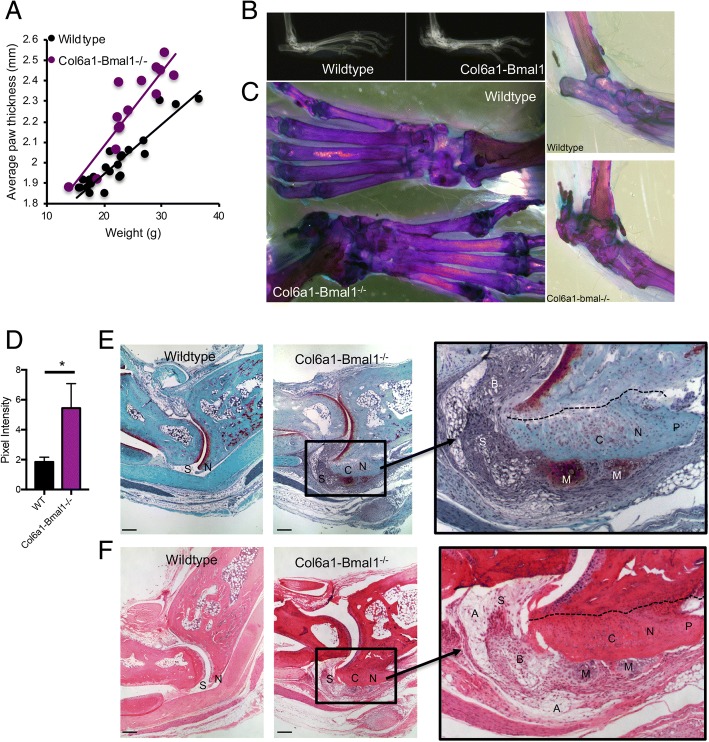Fig. 3.
Effect of Bmal1 deletion in joint mesenchymal cells on joint development. a Hind paw thickness (in mm) plotted against animal weight (in g) measured in male (7 wild-type, 8 Col6a1-Bmal1−/−) and female (18 wild-type, 7 Col6a1-Bmal1−/−) animals. b X-ray images at 9 months. c Whole-mount staining of the hind limbs from 9-month-old wild-type and Col6a1-Bmal1−/− mice. d Quantification of pixel intensity from x-rays of 9-month-old mice in an ROI superior to the calcaneus (n = 4–6 limbs). Analysis was by unpaired t test. e Safranin O staining of ankle joints from 14- to 17-week-old mice where cartilage is stained red. Scale bar represents 500 μm. f H&E staining of ankle joints from 14- to 17 week old mice. Scale bar represents 500 μm. Col6a1-Bmal1−/− mice show thickened synovium (S); the enthesis (N) is eroded (dashed line delimits the interface between eroded bone and repair tissue), and the erosion is filled with exuberant chondro-osseous repair tissue (C) with the formation of a spur (P); there is chondroid metaplasia (M) at the junction of the synovium, joint capsule and enthesis repair tissue. The chondroid metaplasia differs from the chondro-osseous repair tissue in its morphology and tinctorial reaction with Safranin O. The synovium is fibrotic (B) and contains a mixture of spindle and round connective tissue cells. At its interfaces with connective tissues other than metaplastic chondroid tissue, there is a marked increase in adipocytes (A)

